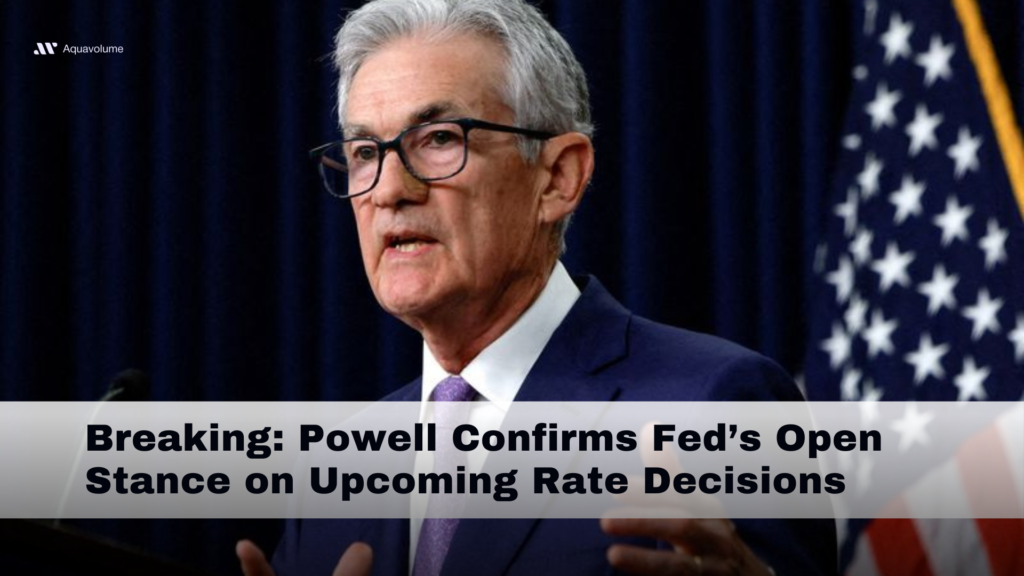
The Chairman of the US Federal Reserve, Jerome Powell, said in his latest statements that the economic risks facing the United States at the present time are like a double-edged sword, so the best solution is to monitor economic data and continuously review this balance and make the interest rate decision for each meeting separately.
Jerome Powell continued in his first speech after the Federal Reserve’s decision to cut interest rates by 50 basis points in September, which comes on the sidelines of a pre-arranged meeting in Nashville, that the Federal Reserve is ready to cut interest rates and move to a balanced monetary policy if the economy succeeds in growing healthily.
Jerome Powell believes that the US economy is solid and strong and the Federal Reserve is using all its tools to maintain it in this case. Powell considered that the growth in the unemployment rate was not large or harmful, and that the Federal Reserve succeeded in reducing the high inflation rate without causing a big jump in the unemployment rate.
Powell added in a speech he gave in Nashville that he and his colleagues will work to achieve a balance between reducing inflation and supporting the labor market, stressing that they will let economic data guide future decisions.
“Looking ahead, if economic conditions evolve as expected, monetary policy will move toward a more neutral stance over time. But we are not on a predetermined path,” Powell said in his prepared remarks to the National Association of Business Economics. “The risks are balanced, and we will continue to make our decisions meeting by meeting.”
While the cut was expected, the 50 basis point move down is not a common move by the Fed, and is an exceptional move that the Fed has only taken in exceptional events such as the Covid pandemic in 2020 and the global financial crisis in 2008.
About this decision, Powell explained that it reflects policymakers’ belief that the time has come to adjust monetary policy in line with current conditions. He noted that the Fed began combating rising inflation in March 2022, and policymakers have recently turned their attention to the labor market, which Powell described as “strong,” although it has “clearly slowed over the past year.”
“This decision reflects our growing confidence that, with an appropriate recalibration of our policy stance, we can maintain the strength of the labor market in an environment of moderate economic growth and sustained decline in inflation to our goal,” Powell said.
“We do not believe we need to see additional slowdown in labor market conditions to achieve 2 percent inflation,” he added. But he did not offer any clear indication of what the Fed will do next.
Powell’s assertion that the Fed has not predetermined its policy is consistent with his previous comments.
Expectations for a November rate cut
Market expectations are that the Fed will move cautiously at its next meeting on Nov. 6-7, with a quarter-point cut expected. However, traders expect the December decision to be more aggressive, with a half-point cut.
For his part, Powell expressed confidence in the strength of the economy and expected inflation to continue to slow. Powell said that if things go as expected, the rate will be cut by 25 basis points in November and 25 basis points in December.
Inflation in August was about 2.2% annually, according to the Fed’s preferred price index. While that’s close to the Fed’s 2% target, core inflation, which excludes food and energy prices, is still running at a higher rate of 2.7%. Policymakers typically consider core inflation a better indicator of longer-term trends given the volatility of food and energy prices.
Housing costs remain one of the most stubborn areas of inflation, rising 0.5% in August. However, Powell believes the data will eventually catch up with the decline in rental prices for new apartments.
“Housing services continue to decline, but slowly,” he said. “As long as new rental rates remain low, housing inflation will continue to decline. The overall economic conditions are setting the stage for further declines in inflation.”
After his speech, Powell was scheduled to participate in a question-and-answer session with Morgan Stanley economist Ellen Zentner.
